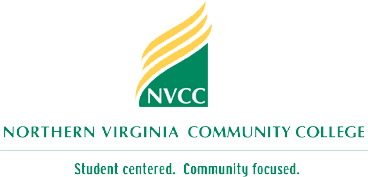 |
Theatre Appreciation Online Course |
Last update: May 17, 2002
Modern American Theatre
Resource: Wil;son/Goldfarb, Chapter 14
Realism is in the mainstream. But some turn their backs on it. Change comes slowly. Experiments occur -- with the results that the experiment comes less radical (its effects going into the mainstream), and the mainstream theatre becomes more adventures (its traditional practices expanding to accommodate the innovations).
Realism had begun as experiment to make theatre more useful to society, and as a reaction against melodrama, those highly romanticized plays. So realism becomes the dominant form of theatre in the 20th century.
By the 1920s, realism was widespread in England, France, and the U.S. In the 1920s, U.S. theatre boomed. There were 200-275 new productions per year on average.
The Theatre Guild, developed in 1919 (discussed below), to bring important foreign works to improve United States theatre, lead to U.S. playwrights competing with the foreign plays.
One of the most important Playwrights to appear at this time was Eugene O'Neill (1888-1953), who during the 1924-25 season, had five plays appearing at one time. O'Neill helped establish serious realistic drama as a major form on Broadway.
The American theatre between 1915 and 1940.
Not till 1915 did the U.S. become aware of technical innovations from around the world
the a number of nonprofessional groups arose -- -- the term "little theatres" came into being. Fees quotes little theatres" emulated the independent theatres of Europe.
Some of these "little theatres" included the following:
Toy Theatre, Boston, 1912.
Chicago Little Theatre, 1912.
Neighborhood Playhouse, New York, 1915.
Washington Square Players, New York, 1915.
Provincetown Players, Massachusetts, 1915.
Detroit, Arts and Crafts Theatre, 1916.
By 1917, there were more than 50 of these "little theatres."
Usually, these theatres used unpaid volunteers and used a subscription system for making money.
They produced several plays per year, using European experimental techniques, which were called "New Stagecraft" in the United States.
Between 1912 and 1920, they helped prepare audiences for you drama and methods.
After 1920, little theatres arose, just like community theatres, which had begun around 1905. By 1925, about 2000 community theatres or little theatres were registered with the Drama League of America.
Drama also began in colleges and universities. There had been no courses in Drama till 1903 -- although there had been performances.
In 1903, George Pierce Baker (1836-1935) began teaching play writing at Radcliffe, then opened it up to Harvard, then in 1913 included workshops for production. His classes studied Eugene O'Neill, S.N. Behrman, and Robert Edmund Jones
In 1945, Baker went to Yale, and established a drama department.
Meanwhile, Thomas Wood Stevens was teaching drama at Carnegie by 1914; by 1918, Frederick Koch was working with the Carolina Playmakers.
By 1940, Drama education in colleges became accepted.
The "New Stagecraft" (European techniques) was really made respectable by 1940. American playwriting was encouraged by such organizations as the Provincetown Players and Theatre Guild.
The Provincetown Players began first in Cape Cod then went to New York in 1916. By 1925, it had presented 93 plays by 47 authors -- all of the American Playwrights. By 1923, it broke into two branches -- one doing American plays, and one doing foreign and period plays.
The Washington's Square Players, disbanded in 1918 and in 1919 formed the Theatre Guild, which was a fully professional theatre. If vowed to present plays that were not commercialy. It uses subscription system and soon became the most respected little theatre in America by 1928 the theatre Guild had reached six other American cities. It was governed by the Board of Directors; and began with a nucleus of actors
There became an eclectic approach to stage. Lee Simonson (1888-1967) was the principal designer, who used a "modified realism," which drew on European ideas.
In 1918, Arthur Hopkins(1878-1950) became a producer. He was adventurous and experimental, working with Robert Edmund Jones. for instance in 1921, the theatre performed Macbeth, which used expressionist tilted arches.
This production demonstrated the commercial viability of "New Stagecraft." By 1930 this was the primary approach.
It was primarily a visual approach -- a "simplified realism."
Lee Simonson, Robert Edmund Jones, and Norman Bel Geddes (1893-1958)-- who was a visionary, like Appia, directed the Divine Comedy that steps, platforms, interesting lighting -- one production had platforms that were 50 feet high.
Many other directors and designers were involved in this "movement," who, while different, all had in common a respect for simplicity to capture the spirit of the text.
In the 1930s, developments continued. The Group Theatre, formed in 1931, was outwardly anti-commercial. It wanted to do plays that had social relevance, and it popularized the "method" style of acting based on the Stanislavsky system. Its predominant visual style was selective (or simplified) realism. Perhaps the most famous playwright to come from the Group Theatre was Clifford Odets (1906-63), whose Waiting For Lefty (1935) was the best example of 1930s "agitprop" theatre.
Much (but certainly not all) of the theatre of the 1930s focused on political/social concerns.
You can take short study quizzes based on textbook materials by going to the Student Online Learning Center page for our textbook...
Next lesson: The Federal Theatre Project / The Workers' Theatre of the 1930s